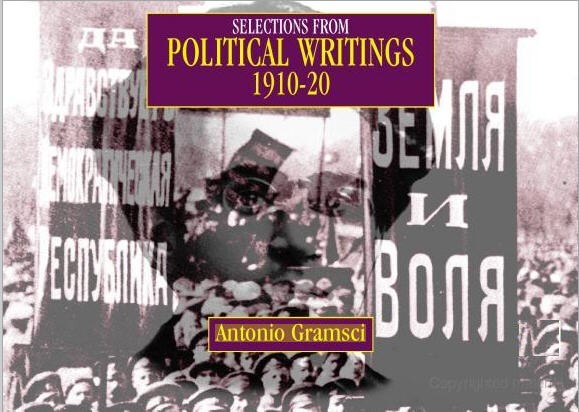
Gramsci Archive

Edited: selected and introduced by Quentin Hoare;
Translated: by John Mathews;
Published: © The Electric Book Company London 1999, ISBN 1-84327-121-4, and transcribed from the edition published by Lawrence & Wishart, London 1977.
A note on the translation
1. Oppressed and Oppressors
2. Active and Cooperative Neutrality
3. Socialism and Culture
4. July 14th
5. A veterinary Surgeon on Film
6. Indifference
7. Remembering the History of the Cotton-workers Struggle.
8. Men or Machines?
9. Notes on the Russian Revolution
10. The Russian Maximalists
11. The Revolution Against ‘Capital’
12. Class Intransigence and Italian History
Class, State, Parties
Does Italy have a class state?
The unspoken promise
Realism and empiricism
The Function of the proletariat
13. The Russian Utopia
14. Our Obligation to be Strong
15. The War in the Colonies
16. The Revolutionary Tide
17. Workers’ Democracy
18. The Return to Freedom
19. The Conquest of the State
20. Towards the Communist International
21. Workers and Peasants
22. Electoralism
23. The Development of the Revolution
24. To the Workshop Delegates of the Fiat Centro and Brevetti Plants
25. Unions and Councils
26. Trade Unions and the Dictatorship
27. Syndicalism and the Councils
28. The Program of the Workshop Delegates
Preamble
General Regulations
Appointment of delegates and their powers
Delegates and unions
The duties of factory delegates
Towards workers’ schools
The Exective Commisariat of a factory
Appointment, functions, powers
Publications, notices, reports, meetings
29. Revolutionaries and the Elections
30. The Problem of Power
Political order
Economic order
31. The Events of 2-3 December (1919)
Petty Bourgeoisie
A hypothesis
Class struggle, peasant war
32. The Party and the Revolution
33. Workers and Peasants
34. The Historical Role of the Cities
35. First: Renew the Party
36. Action Program of the Turin Socialists
37. The Instruments of Labour
38. Governing Party and Governing Class
39. Proletarian Unity
40. The Problem of Force
41. Turin and Italy
42. Address to the Anarchists
43. Towards a Renewal of the Socialist Party
44. The System of Communist Representation – Bordiga
45. Is this the Time for Soviets? – Bordiga
46. Letters to the IIIrd International – Bordiga
i.
ii
47. Towards the Establishment of Workers’ Councils in Italy – Bordiga
i.
The Councils and the Bolshevik program
The Bologna program and the Councils
The Councils and the Leone motion
The Councils and the L’Ordine Nuovo in Turin
Appendix
The Leone Statement
48. Seize Power or Seize the Factory? – Bordiga
49. Political and Trade-Union Significance of The Factory Councils
50. The Tasca Report and the Congress of the Turin Council of Labour
51. The Favctory Council
52. Unions and Councils
53. Polemics over the L’Ordine Nuovo Programme – Tasca
Editorial Note
54. On the L’Ordine Nuovo Programme
55. The Colonial Populations
56. Two Revolutions
57. The Turin Factory Councils Movement
The April strike
Anarchists and syndicalists
Industrial production
Turin, the capital of Italy
Two armed insurrections
Barricade, trenches, barbed-wire entanglements
The cooperative alliance
The post-war period
Enthusiastic support for the Councils
The Councils and the Internal Commissions during strikes
The struggle against the Councils
The National Socialist Council in Milan
58. Editorial: 21 August 1920
59. What Do We Mean by Demagogy?
60. The Occupation
61. The Communist Party
62. Red Sunday
63. Five Months Later
64. Political Capacity
65. Editorial: 9 October 1920
66. Reaction
67. Predictions
68. What is Reaction?
69. Split or Run?
70. Editorial: 24 December 1920
71. The Workers’ State
72. The Livorno Congress